
I've recently come across some all-weather paper. It advertises to be "ideal for any field note-taking situation", and will "protect my fieldwork". A few preliminary tests when I first got it had me impressed (the ability to write on it WHILE it was underwater was quite interesting), especially since it also claims to be made from 100% wood product, no plastics or coatings whatsoever. Biodegradable all-weather paper? Something seems strange about that. It's time to see just what "any situation" this paper can handle. Click the images on the right to enlarge.
| Given this paper wasn't the cheapest thing on the market (about $30 for 200 sheets of copier paper), I didn't want to waste too much of it. A single sheet of this all-weather paper compared to a single sheet of regular copier paper should do the trick. I cut each page into six 'thicker' strips, one 'thin' strip, and two larger squares. that would cover most of the tests I had planned, and any of the strips could be re-used for other tests as well. Why limit them to just one? Also, note that there is something on the opposite side of each sheet. The all-weather paper has a printout of a picture of my cat (now in pieces... the picture that is, not the cat itself :P), and the regular copier paper had a relatively densely worded document in small font. |
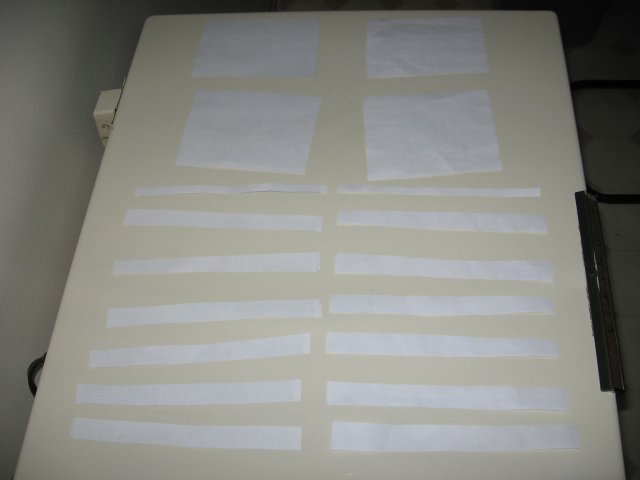
|
| First things first, we need to label these in some form or another. The textures of the paper feel different, but who knows if it would remain that way over the course of the tests? It's best to label everything anyway. To begin with, I put an "AW" (for all-weather) on predictably the all-weather paper, and "Reg" on the regular copier paper. First up... the 'dry' writing tests. I wanted to give it a fairly thorough test of the various types of pens out there. For this whole experiment, I wasn't about to go out and buy a half-dozen different types of pens, but by blind luck, I happened to have four different types of writing instruments lying around. The classic pencil, a regular ball-point pen (pressurized, since I learned that non-pressurized ballpoint pens hate wetness no matter what), a gel-pen, and a silver glittery pen. |
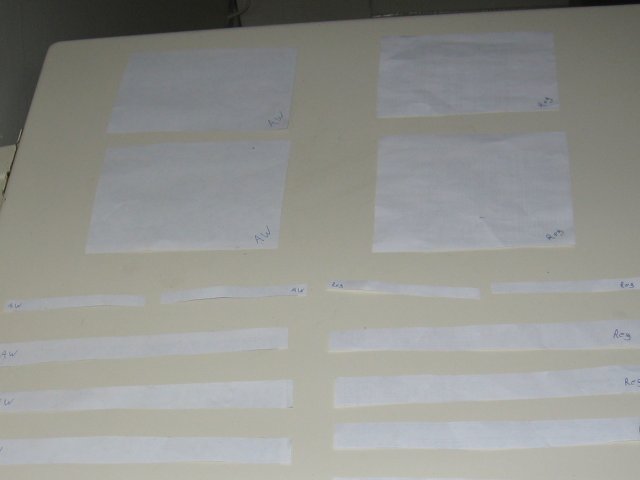
|
| As you can see, I took each writing instrument and wrote what the test was, and added some random kind of squiggle underneath to see how clear it came out. The pencil seemed to be nigh-identical between the all-weather paper and the regular paper. No big surprise there though, since at this point the only difference is in the texture. |
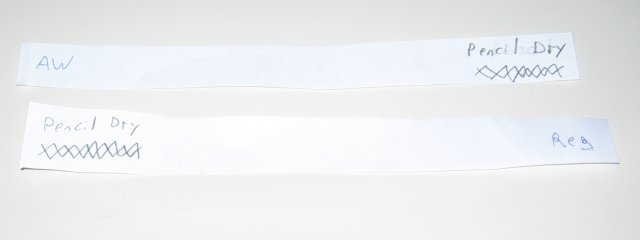 |
| Second up is the regular ink. Again, for all intents and purposes, they are completely identical. |
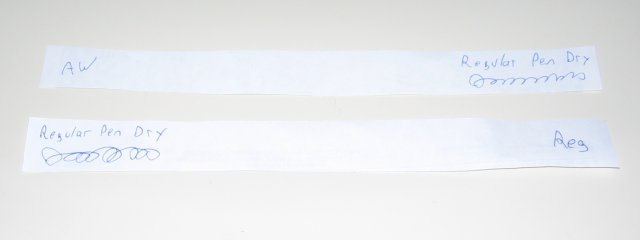 |
| Third up is the gel pen. I've never been fond of these, but my wife loves them. Here there was actually a visible difference. It writes normally on the regular paper, but is less clear and slightly scratchy-looking on the all-weather paper It felt rough when writing with the gel-pen as well. Of course, a gel-pen does that with ALL paper in my opinion, it did that moreso with the all-weather variety. |
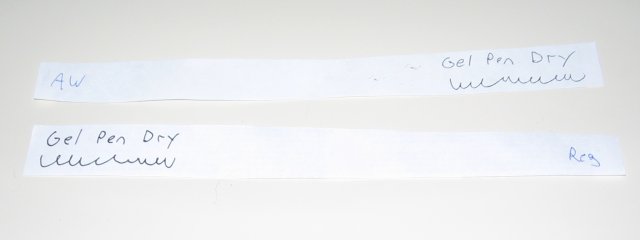 |
| Lastly is the silver gel pen. Given it's also gel-based, it was somewhat scratchy, although not as much so as the regular gel pen. Both visibly ended up almost identical. |
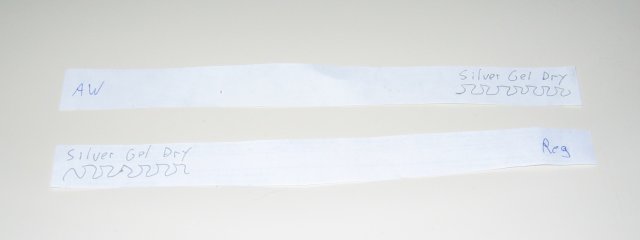
|
| And what kind of paper test wouldn't be complete without a 'smear test'. I would first test how easily the four types of inks would smear over set conditions. As we can see, the all-weather definitely has more smearing when attempted to smear immediately. After a 5-minute wait however, the regular and the all-weather paper turn out nigh-identical. |
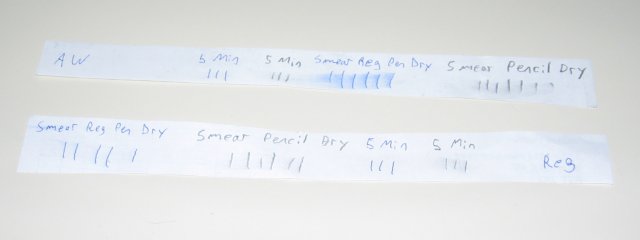 |
| It becomes clear that this all-weather paper is not made for gel pens. When smeared instantly, both the silver and the regular gel pens smeared only somewhat on regular paper, but severely on the all-weather paper. Even given a 5-minute drying time, the regular paper held the ink perfectly, but the all-weather paper still smeared. Not nearly as much as originally, and it would be completely readable at that point, but it would still make a mess of page if you leaned on it after writing something. |
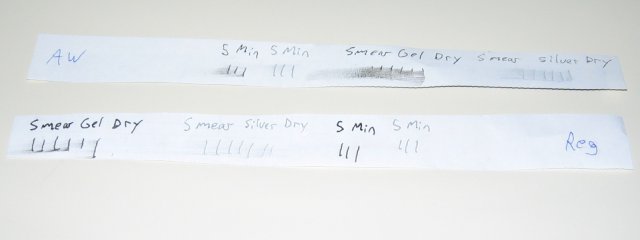
|
| Now is when things get interesting. I took the whole lot strips and dropped them into a glass of water. There were more strips than you've already seen, but we'll be getting to those soon enough. The strips remained underwater, stirred around gently twice, for 5 minutes before being removed, and given 30 seconds to air-dry. |
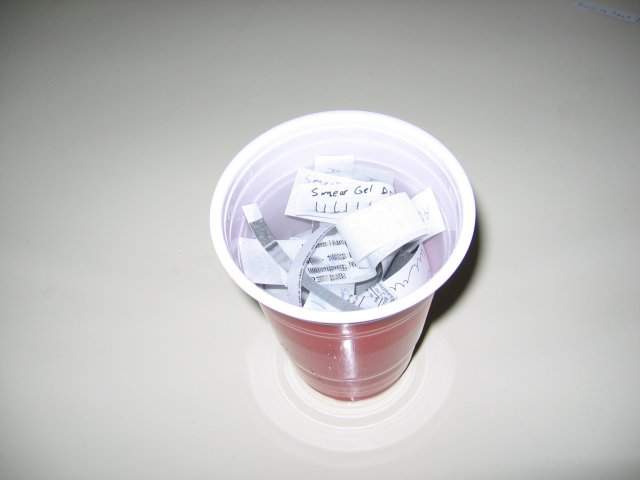 |
The wetness test (part 1)
The wetness test (part 2)
The crumple test
The extreme temperatures test
The multiple fluids test (part 1)
The multiple fluids test (part 2)
The strength test
The paper airplane test |










